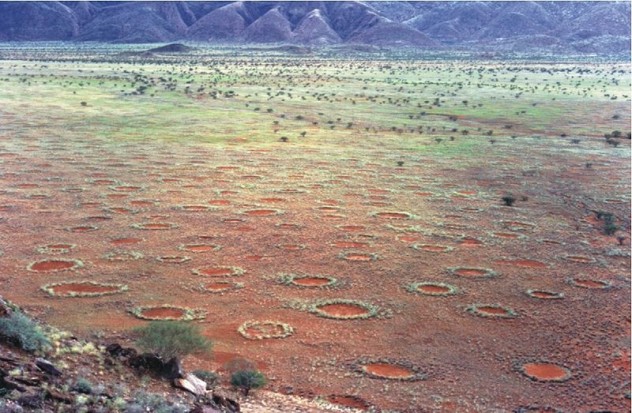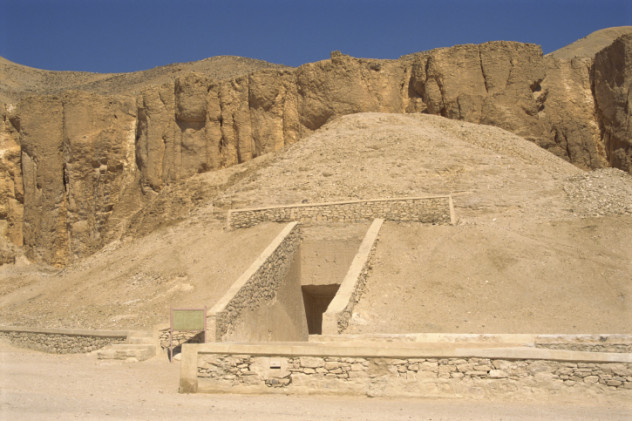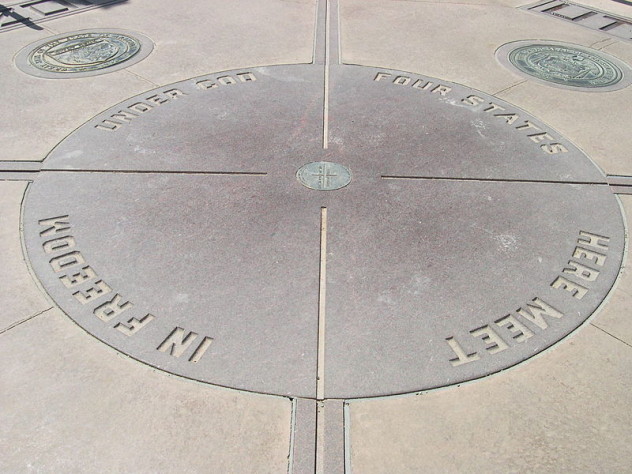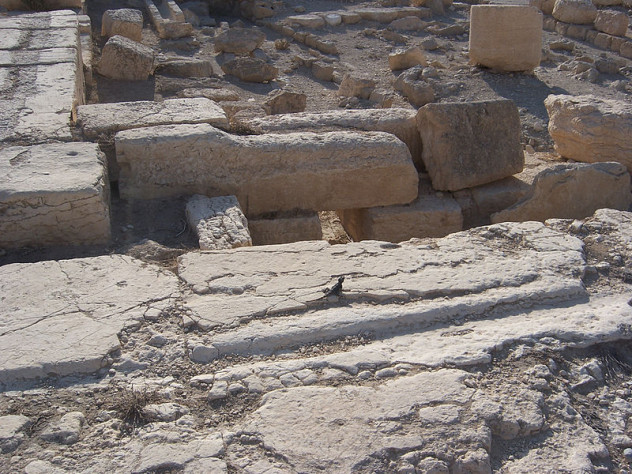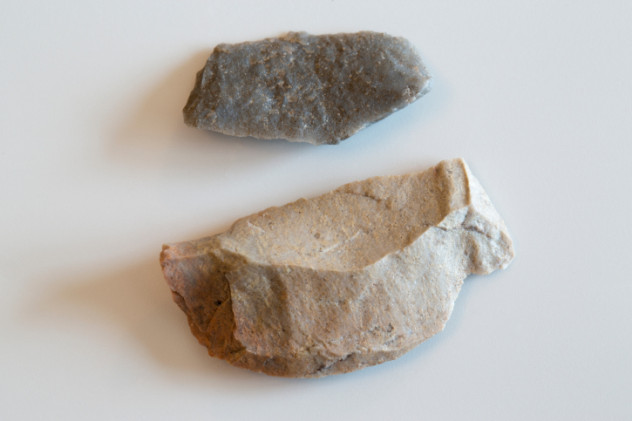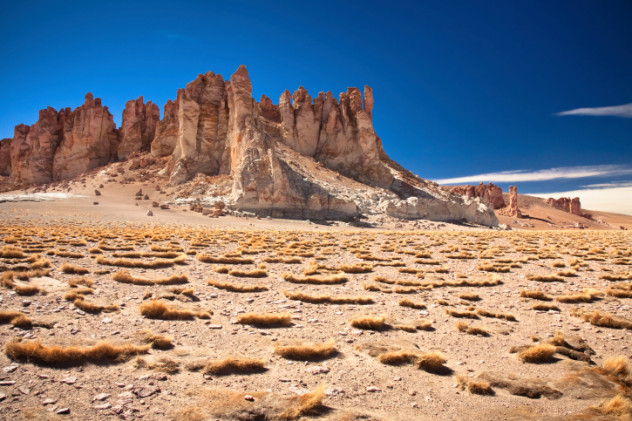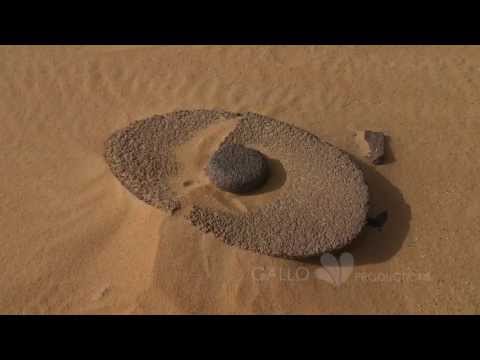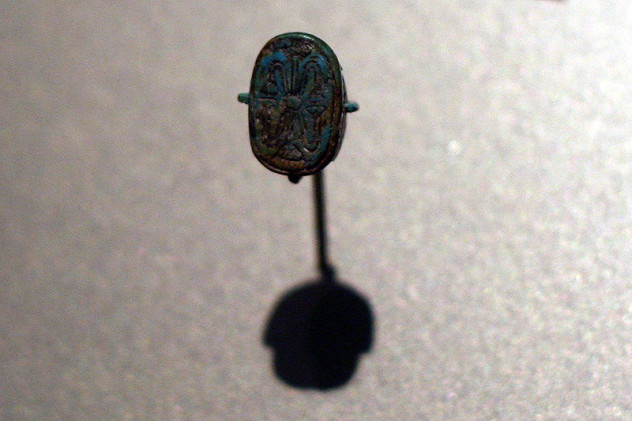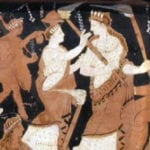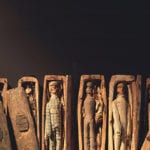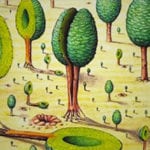10 Fairy Circles
In the Namibian desert, millions of evenly spaced circles dot the landscape. Their edges are lined with knee-high grass, but nothing grows in the centers—not even when fertilized soil is added. The mystery surrounding the origin of these natural rings has inspired many theories over the decades, but none pan out to the satisfaction of everyone in the scientific community. Suggestions include the work of termites, sand-bathing ostriches and zebras, noxious plants and fungi killing circular patches of grass, subterranean gas, competing grasses, and levels of available nutrients in the soil. While most fairy circles appear in the Namib Desert, they occupy a 1,800-kilometer-long (1,100 mi) stretch that reaches Cape Province in South Africa. One aspect of the circles that indicates systematized organization is that they never overlap, causing scientists to speculate whether the circles are competing with each other in some way. Each fairy circle can expand between 2 and 20 meters (7–65 ft) in diameter and have a lifespan of up to 75 years. No one knows what causes them to vanish.
9 Strange Tomb
In the Valley of the Kings, the same necropolis where King Tutankhamun’s remains were discovered, a 3,000-year-old mystery came to light. In 2005, a plain limestone chamber was accidentally discovered underneath some ancient workers’ huts. It housed 28 enormous jars and seven coffins. All the caskets were carefully sealed. Some were adorned with yellow faces, but none contained bodies. Instead, the coffins and jars were stuffed with pieces of pottery, rocks, mud seals, cloth, wood, and natron, a powder used to dry the dead. One of the coffins even had another coffin inside of it. Was this a fake burial to fool someone? The valley certainly had been under siege from grave robbers. If the purpose was to dupe thieves, the chamber ironically appears to be the only tomb in the region to have escaped looters. Even as a fake tomb, there should’ve been royal name inscriptions, chests, and items of value to be convincing, but there were none. There are theories that the strange contents was debris from an embalming studio, another desecrated tomb, or even from Tutankhamun’s embalming. No one can explain why such waste was sealed like bodies in decorated coffins and spirited away in a valley reserved for royal burials.
8 Four Corners Gas
In 2003, a satellite used to measure methane found a deadly cloud of this greenhouse gas as it passed over the Four Corners in the United States. The Four Corners is the area where Colorado, New Mexico, Arizona, and Utah meet. Something was releasing a shocking amount of methane equal to 10 percent of annual emissions of methane in all of the United States. This continued for six years. Then it stopped as mysteriously as it had started. There are nearly 40,000 wells in the area that could have been responsible for the outpouring of greenhouse gas. The purpose of these wells is to extract natural gas, which is mostly methane, from the local coal-rich environment. However, it cannot satisfactorily explain the sheer volume of the greenhouse gas found floating above the Four Corners. According to NASA, the possibility that the six-year methane event was a natural gas leak cannot be discounted. Whether it was man-made or natural, researchers are still trying to discover the origin of the methane, a gas more effective at creating global warming than carbon dioxide.
7 Syrian Ruins
There are ruins in the deserts of Syria that are older than the pyramids. They are the last remnants of a mysterious city that once stood 80 kilometers (50 mi) away from what is now Damascus. Founded 5,000 years ago, even the ancient city of Damascus is young compared to these ruins. In 2009, archaeologist Robert Mason was working on a Syrian monastery built in the fourth or fifth century when some unusual nearby rock formations caught his eye. These included possible tombs as well as stone rows and circles. Mason also found walled formations called “desert kites,” rocky traps that would’ve corralled gazelles and other animals into an area where they could be easily killed. Pieces of stone tools found in the vicinity of the secretive structures allowed Mason to put an age on the discovery: 6,000 to 10,000 years old. The earliest pyramid, the Great Pyramid of Giza, is believed to have been built 4,500 years ago. At this point, who built the city and why it went to ruin are still unknown. Due to the war and other conflicts in the region, it’s too dangerous to properly investigate this desert riddle.
6 The Unknown Species
The oldest handmade stone tools ever discovered were unearthed in Kenya’s desert badlands. The 2011 discovery could disprove the cemented belief that ancient tool manufacture happened only in species related to modern humans. The 149 rocky artifacts date back to about 3.3 million years ago, a time when no known human ancestor existed. Whoever the craftsman was, he had the physical and mental capacity to put a razor edge on a stone, a technique known as “knapping.” Researchers don’t know who made the tools—only that the species of humanoid remains unidentified. It could have been a prehuman group or another capable species completely unrelated to humans. Mainstream belief also holds that advanced cutting tools developed when climate change reduced forests to savannas and meat became an important part of survival. But the Kenyan artifacts prove that the craft wasn’t sparked by the need for meat processing. Back then, Kenya wasn’t a desert but a shrubby woodland.
5The Atacama Nitrates
Charles Darwin called the desert of Atacama a place “where nothing can exist.” This South American desert is considered the driest spot on the planet and is lucky if it gets more than 1 millimeter (0.04 in) of rainfall a year. But something is flourishing there—the world’s most abundant nitrate and iodine deposits. This is a mineral mystery unlike any other. The bacteria needed for nitrate and iodine deposit formation is simply not there, and yet the Atacama nitrates form a crusty strip about 700 kilometers (435 mi) long and 20 kilometers (12 mi) wide. Possible explanations for this colossal belt of nitrates include speculations that the minerals arrived with the help of Pacific Ocean sea spray 50 kilometers away, atmospheric nitrogen turning into nitrates by binding with soil and salts, and ancient mineral-rich ground water forced to the surface during the rise of the local mountains. At the moment, the ground water theory is considered the likeliest, but nothing has been proven beyond a doubt.
4 Pisco Holes
Overshadowed by their famous neighbors the Nazca Lines, few people have heard about the other ancient mystery of Peru. Found in the arid region near Pisco Valley, thousands of cone-shaped holes have been carved into the rocks by unknown hands. Some theorize that the holes used to serve as grain silos or graves of a mysterious people, but despite the fact that some are up to 2 meters (7 ft) deep, they don’t seem to have been used as storage pits for food or bodies. Such a huge graveyard would’ve left evidence behind, but not a single tooth or a fragment of an artifact has ever been found in any one of the holes—and there are many. An estimated 6,900 pits bore into the mountainous terrain in a band about 1.5 kilometers (1 mi) long and 20 meters (65 ft) wide. Some of the holes are precisely lined up with each other, but others are more unevenly spaced. The reason for carving such labor-intensive structures, estimated to have taken decades to complete, is lost to time. There are some tantalizing clues, however. Satellite pictures have captured what looks like the ruins of an ancient settlement to the east. The holes also come to a sudden end near a spot that some say looks like it was destroyed by an explosion. The ruins and unusual ending of the excavations may be nothing, but they certainly deepen the intrigue of the Pisco Holes.
3 Nabta Playa
The Sahara Desert holds a megalith mystery 1,000 years older than Stonehenge. Called Nabta Playa, the site includes a ring of standing stones, five rows of upright and fallen slabs, and possible tombs. The stones weigh a couple of tons, and some are 2.7 meters (9 ft) high. An unknown Stone Age people planted the complex 6,000 to 6,500 years ago, making it oldest astronomical alignment of megaliths ever discovered. Satellite photos confirmed that one of the rows point east-west, and certain slabs inside the circle line up in a north-south direction. Two additional lines made up of more stone monuments start at the same megalith, but one runs northeast and the other southeast. The stones mark the summer solstice and possibly the rainy season. Nabta Playa was built on the shores of a lake and is partially submerged during summer and fall. Cattle burials and everyday items have been found at the site, but there are no human remains. Nabta Playa upsets the accepted beliefs of Egypt’s history. The builders of that time were more advanced than previously believed and might even have been one of the cultures that inspired the complex pharaonic dynasty of Egypt.
2 Spider Art
A broken but unique piece of art was discovered in Egypt’s western desert. A sheet of sandstone in the Kharga Oasis 175 kilometers (108 mi) west of Luxor depicts what could be the only known spider rock art from the Old World. Facing the dawn, the exceptional find shows pictures of what resembles a web, spiders, and even ensnared prey. The exact age of the panel, which is cracked into two pieces, is hard to establish. Egyptologists believe its history could reach as far as 4000 BC—or even earlier in prehistory. Egypt didn’t even exist yet. When the civilization did establish itself, spider hieroglyphs were rare. It’s not understood why the artist chose the arachnids as an art subject or what significance it held; it could just as easily have been an act of totem worship as it could’ve been a bored doodle. The experts simply don’t know. All we know is that it is the only art of its kind discovered in all of Egypt and the rest of the Old World so far.
1 Desert Glass
Tests on a scarab jewel that once belonged to King Tut proved that the glass it was made from was produced before the earliest Egyptian civilization. Curious for answers, scientists discovered an area in the Sahara Desert where mysterious blocks of glass litter the sand. The first atomic test in New Mexico in 1945 left a similar fingerprint. The detonation left behind a thin sheet of glass, but the Egyptian glass eclipsed the test site in sheer size. Whatever event made the glass had to be hotter than an atomic explosion. The suspects include a meteor impact or a phenomenally hot air burst. Since there is no evidence of an impact crater, scientists tested the air burst theory with computer simulations. Results showed that if a Shoemaker-Levy type impact exploded into Earth’s atmosphere, the resulting fireball would hit the ground surface like a furnace, cooking sand into glass with temperatures up to 18,000 degrees Celsius (32,500°F). Interestingly enough, this correlates with the zircon that was found in the Sahara glass. By measuring how degraded the zircon is, the heat the sample was exposed to can be calculated. The Egyptian glass gave a reading roughly the same as the simulation. Nothing terrestrial can create that kind of heat, which makes the air burst theory very plausible. Whatever it was, it’s hit the planet before. In Southeast Asia, 800,000-year-old glass stretches over an area of almost 800 square kilometers (300 mi2). It’s suggestive of an event deadlier than the one that created the Egyptian glass field. Jana Louise Smit won’t ever go into a desert unless there is a free cocktail bar. Read More: Facebook Smashwords HubPages
